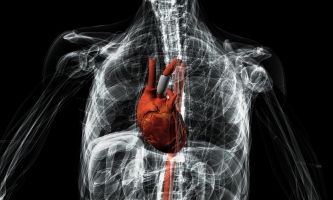3D Printed Heart Pump Could Help Save Lives

Artist’s concept of the smart aortic graft implant. Courtesy of NTU.
Latest News
September 16, 2013
According to the CDC, heart disease is still the leading cause of death in the US. For those patients lucky enough to be diagnosed with a condition before a serious heart incident occurs, one method of treatment involves a heart transplant. Unfortunately, the number of hearts available for transplants always lags behind the number of patients waiting for a new heart.
The US Department of Health and Human Services estimates that around 3,000 people seek a new heart each year, with only 2,000 available hearts to go around. During the waiting period, patients are hooked up to a ventricular assist device (VAD), essentially a small pump to regulate heart and blood flow. Researchers at Nottingham Trent University (NTU) have filed a patent for a new, 3D printed VAD that could extend the lifespan of patients awaiting a heart transplant.
Most VADs are large machines that require constant supervision in a hospital, and even the smaller units leave an opening in the body that invites the potential for infection. The VAD under development by NTU includes a 3D printed enclosed battery power source, and is small enough to be implanted in most patients. A “smart aortic graft” is implanted in a removed section of the aorta and works to artificially support a diseased heart.
“Chronic heart failure is a major health challenge and up to 40% of sufferers die within the first year,” said Dr. Philip Breedon, team research lead. ““The technology currently used to help people with acute heart failure can only be used for a few days and involves the patient being attached to large external machines which need to be plugged into the main power supply. The smart aortic graft has the potential to not only extend a patient’s life, but also to provide them with mobility, comfort and a reduced need for carers.”
The research team plans to use additive manufacturing to customize each pump for a specific patient, based on information gathered from an MRI scan. The entire 3D printed design will include the battery, and pump architecture, and could theoretically be recharged using wireless methods.
Below you’ll find a short video about VADs.
Sources: NTU, US Dept. of Health and Human Services, CDC
Subscribe to our FREE magazine, FREE email newsletters or both!
Latest News
About the Author
John NewmanJohn Newman is a Digital Engineering contributor who focuses on 3D printing. Contact him via [email protected] and read his posts on Rapid Ready Technology.
Follow DE






